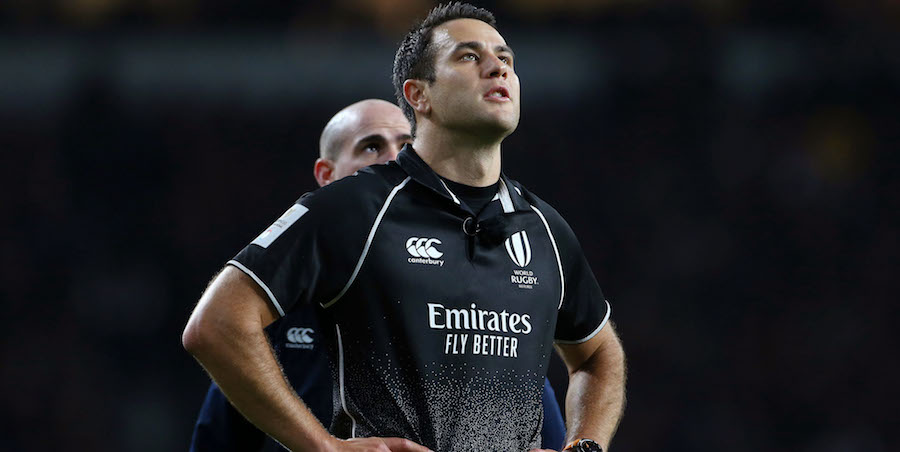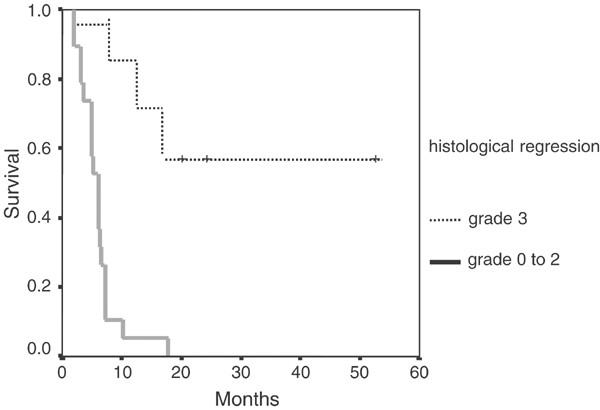
- Select a language for the TTS:
- UK English Female
- UK English Male
- US English Female
- US English Male
- Australian Female
- Australian Male
- Language selected: (auto detect) - EN
Play all audios:
IN ASSOCIATION WITH ACME WHISTLES As we approach the Rugby World Cup in France, the team at Acme Whistles was able to grab some valuable time with tier one referee, Ben O’Keeffe, having just
landed in France for the tournament – to discuss the benefits and impact the bunker system will have over the coming weeks. Not only was Ben able to discuss recent applications of the new
system, but as a regular referee in Super Rugby, he has also been using the bunker for some time. He started by saying; “One of the things we’re trying to get across is that it’s new, in the
sense that we’re now doing it at World Rugby; but it’s NOT NEW for southern hemisphere. “This is a system that’s been tried and tested for a while now – and in my view adds value for the
players, officials and spectators.” Having used the system, we asked Ben if the bunker system changed the role of the referee, he replied; > “I think the main thing that it has done is
added another team > member to the group of match officials. > > “We were a team of four with the assistant referees and the TMO, > whereas now we see ourselves as a team of
five, because we’ve got > those members plus the bunker official who is very much part of our > team. > > “On field it probably doesn’t change our role as much. > > “It
has however allowed us to quickly assess if foul play reaches > the threshold of the yellow card and quickly pass that to the bunker > to spend time to go through the angles and assess
the degree of > danger. > > “Where that role has changed is that we used to do that on field, > we used to do that in the arena with the director trying to find > those
angles. Sometimes it worked really well but sometimes I think > it got messy. That’s probably why they looked for some change to > try and revolutionise that as part of the system.
> > “I’m a massive fan of it and I think it works really well. > > “I think we’ve already seen some good examples of it in games > over the last few months.” One of the
thoughts behind the system was to stop lengthy on field decisions. We went on to discuss if that had been achieved from the referee’s perspective; > “It is soo much faster now compared to
what we used to be able to > do. > > “One role that I’ve always worked hard at is my communication > around those moments. > > “In terms of timing there are a few
examples last year when we > weren’t using the bunker and that process to get to a red card > took about 3 to 4 minutes. Thats 4 minutes of game time that’s > lost with time added
to the end of the game. > > “That’s time where cameras are on the referee; cameras are on > replays of the incident occurring and we’re having to go through a > pretty slow
approach to determine if it is foul play, if is it head > contact, what’s the degree of danger, and is there any > mitigation?’ > > “For the spectator, that is 4 min of watching
the referee talk > through a process. > > “And that’s all happening with the game stopped. > > “We’ve seen some amazing games already this year. Those are > amazing
games because we see tries scored, and players playing the > game of rugby – they’re not amazing games when the referee has > stopped it, and the cameras are on us. > > “The
bunker system has allowed us to quicken it up. I timed the > difference, and I gave one yellow card that was upgraded to red, and > from whistle to whistle it only took about two
minutes. > > “It’s very easy for us now especially as we’re getting better > at the process of seeing it on the big screen, The TMO has already > told me that there is head
contact, so I just look to see if it is > foul play and if it reaches that yellow card threshold. > > “I can do that within one to two replays. > > “In that scenario we give
the yellow card and make the cross sign > to put it on review and then we can play rugby and the bunker can go > to work behind the scenes. > > “One example that I had in the
Scotland v France game, earlier in > the season, is that in the time the bunker team was reviewing the > incident we actually had a try and conversion. So, whilst the card > was
under review – we all got so see some great rugby. > > “I think it’s fantastic and it’s working really well and > changed the role for us as referees for the better.” What about
decision making? Will the availability of technology and time make for a better decision on foul play? > “I think it definitely has,” O’Keeffe adds. > > “Eight minutes is a lot of
time to be able to review a situation. > As they have access to all the angles, I would normally find that > they get to make a decision within two to three minutes. > > “The
benefit of the bunker team is that they are tucked away, not > at the game, at the World Cup Roland-Garros tennis centre, watching > the games from all around the country. > >
“They will be fed all of the footage, be able to look at all of > the angles and make a really well-informed decision without the > potential pressures of the crowd, and without
digital pressures of > the angles that directors can find at the time. > > “You can see everything within that time and make a really > well-informed decision based on the
process and guidelines that > we’ve been using set by World Rugby over the last few seasons.” Since the dawn of the game, the buck has always stopped with the referee. We asked Ben if
there is any sentiment within the officiating community that the bunker system reduces the referee’s level of authority? > “No not at all. I think what we’ve seen happen over the last
> decade is that where once the referee was the number one influencer > of the game, we work more as a team now. > > “I heavily rely on my assistant referees to do their role
and play > their part to help me be the referee in the middle, and the same > goes for the TMO in the background as well. > > “Now the bunker system has added a fifth member of
the team. > > “It is still the responsibility of the referee, the assistant > referee and the TMO to flag potential foul play. We then review and > make the decision that it
reaches the yellow card threshold. > > “We are then putting our trust in our team member in the bunker to > make the same decision we would on field – but with the luxury of >
more time and better replay angles. > > “As the game at the top level has been getting faster, more > intense, more pressured, we have a greater reliance on our full team > to
referee a game really well.” With the world’s biggest rugby tournament around the corner, we asked Ben if he thinks the new bunker system is going to be a welcome addition. He said; >>
“I think it’s definitely a welcome new addition and I think >> it’s going through some growing pains at the moment especially >> with people that haven’t seen the bunker
system work before. >> >> “I’m used to it as I’ve refereed with it in Super Rugby >> where we use a very similar bunker system. >> >> “I know that when I
used it at the Scotland v France game there >> was a lot of questions still around it because people weren’t >> used to it, but I’ve heard that the overwhelming feedback from
>> peers and people in the rugby world it that it’s a really good >> addition to the game. >> >> “I believe the general feeling around it is that we are getting
>> speed and flow back and getting less interruptions from the >> referee. >> >> “I think it will take some time, but over the World Cup we’ll >> start to
see a better understanding around the system. >> >> “Some of the things that I get asked are “can a referee still >> give a straight red card?” – and yes, they can
give a straight >> red card on the field; but we’re going to be trying to use the >> yellow card system so that most foul play will be sent to the >> bunker. >>
>> “So, unless we see a punch, a kick or an eye-gouge – which I >> can’t remember the last one of those were in my games – even >> if it’s probably a clear red to the
public, we’re going to >> still send it to the bunker to make sure it’s an accurate >> decision. >> >> “Normally these new processes take quite a while to come
into >> the game, they have to go through certain trials. I think what >> World Rugby did really well, is they did trials of it in Super >> Rugby, they did a review from
how it worked, reformatted it >> slightly to be better – so I actually think that process is even >> better now leading into this World Cup.” We finished our insightful chat
with Ben, by asking if the bunker system was an inevitable next step with a greater focus on head contact and player safety. Ben added; > “I think that’s what they are trying to do in
rugby is find the > balance between keeping the sport spectacle, but also player safety. > > “On one side we are working really hard on player safety, so > making sure that
there is a head contact process. > > “I think the bunker helps on the other side of the game, which is > keeping the spectacle. > > “What they’ve done is actually speed up
the game so that we can > make decisions that still look after player safety, but the game is > still moving on, and you know we’re not stuck watching referees go > through a TMO
process.” > > For more information on ACME Whistles and to learn more about > becoming a referee visit www.acmewhistles.com








